Seven-year research project under way
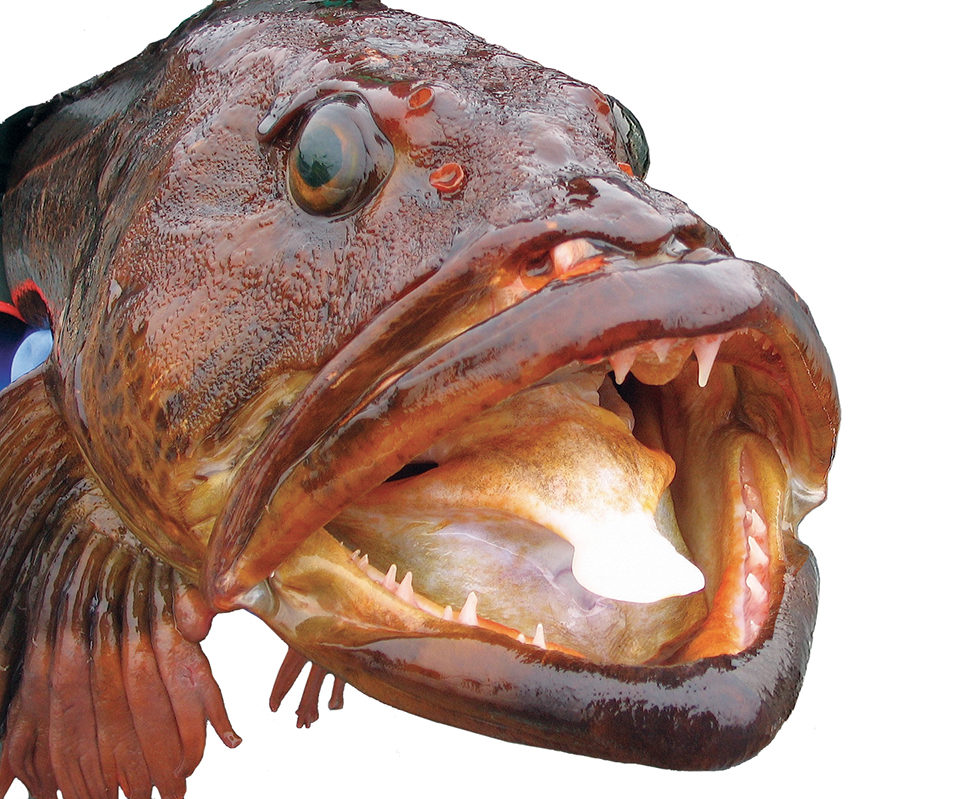
Lingcod is an important sport fish in the United States’ state of Washington. Its large size and aggressive feeding behavior make it ecologically important, as well. Lingcod are susceptible to pollution, shoreline development and overfishing, but populations are rebounding.
Stock enhancement of lingcod is being studied as a potential management tool. Because lingcod adapt well to culture, live ship with minimal mortality and produce high-value fillets, they may make an excellent aquaculture species, as well.
Stock enhancement
Building on the past success of lingcod culture at the National Oceanic and Atmospheric Administration (NOAA) Manchester Research Station in Port Orchard, Washington, USA, the authors have begun a seven-year project to further investigate enhancement as a tool for rebuilding depleted lingcod stocks in Puget Sound, Washington. The February-June season cultured approximately 2,000 juvenile lingcod, short of the goal of 10,000 but enough to move forward with the planned studies outlined below.
Collaborators on the project include the Washington Department of Fish and Wildlife, Puget Sound Recreational Fisheries Enhancement Oversight Committee, Northwest Indian Fisheries Commission, Puget Sound Anglers, Washington SCUBA Alliance and University of Idaho.
Lingcod larvae
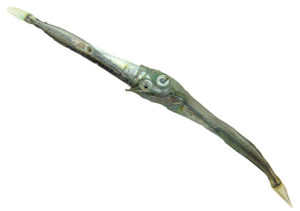
Lingcod spawn in nearshore high-relief areas, where females deposit their eggs in nests that are fertilized and guarded by males until hatch. This year, divers collected portions of approximately 30 nests. During dives, nest locations were marked, and small quantities of eggs were removed from the nests without harming the remaining eggs and brought back to the hatchery.
The lingcod larvae hatched at approximately 8 mm and began feeding within a couple of days. The larvae were reared in 2-m-diameter 10,000-l bags. The lingcod were fed a combination of enriched artemia nauplii, wild-captured zooplankton and frozen copepods. The larvae were gradually weaned onto prepared feeds 60 to 90 days post-hatch at a length of 40 to 50 mm. At this stage, they were size graded and moved from the mesocosm bags to small net pens.
This year, the Manchester Research Station increased its live feed production capacity in order to raise enough artemia nauplii as feed for approximately 29 mesocosm bags. New staff were trained on the production of juveniles using methods previously developed at the hatchery. The facility also made improvements to the dock area where the mesocosm bags are held to prevent damage by seals and sea lions, and added a computer-automated feeding system.
Larval challenges
Larvae face a number of challenges in the large mesocosm bags, including cannibalism, fluctuating water quality and introduced predators and parasites. This year, cannibalism was seen in much younger and smaller fish than in previous years. Cannibalism attempts caused significant mortality in larvae and juveniles because the skin and eyes of the fish were often damaged during the attacks.
Cannibalism mortality was quantified in tanks using small juveniles. Mortality was significantly greater in tanks with different-sized fish (Fig. 1). This study also suggested that cannibalistic behavior is reduced after fish are fully weaned onto pellets.
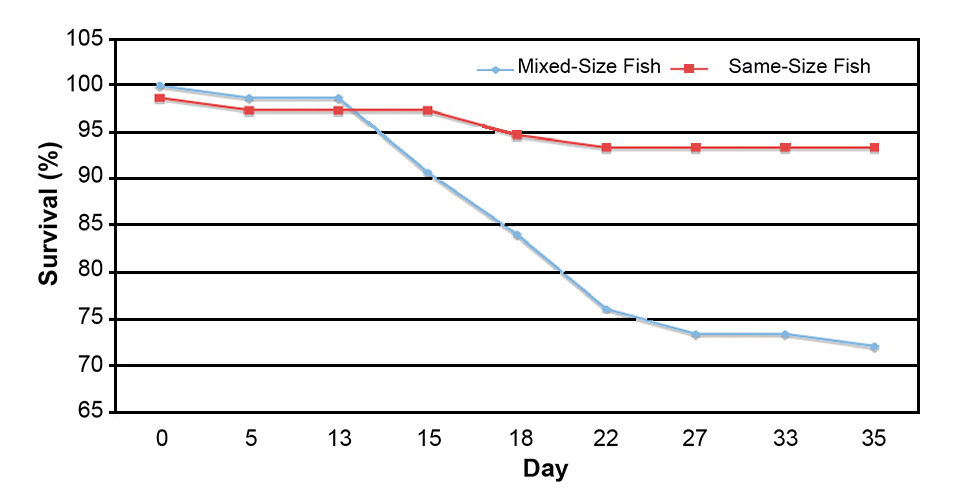
Diets and feeding
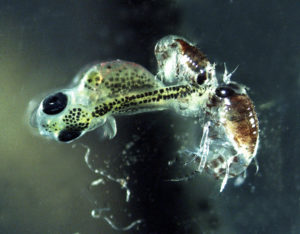
Future experiments will test if weaning fish onto artificial diets as early as possible can minimize cannibalism. Early weaning to artificial diets, however, could increase fouling with diatoms, algae, feed and feces in the culture bags, resulting in high ammonia levels and generally poor water quality. Water quality becomes less of an issue in the small-gauge nets. In 2009, the authors plan to introduce fish into nets sooner.
Artemia feeding is supplemented with wild zooplankton that include copepods, amphipods, fish eggs and invertebrate nauplii. The zooplankton are automatically collected with drum filters and distributed to the bags 24 hours a day. Although live zooplankton is the natural diet of lingcod larvae, researchers are unsure if they help or hurt lingcod survival in study.
Previous studies successfully reared larvae only on enriched artemia. Larvae may eat less enriched artemia and other feeds if they only select preferred, but limited species from the zooplankton. Also, predatory organisms such as amphipods and jellyfish, which can become numerous, can impact health and mortality during the first two months.
Tag, release studies
In 2004 and 2005, researchers evaluated tagging equipment and procedures. Fourteen hatchery-produced adult lingcod were surgically tagged with acoustic tags and released at two sites in southern Puget Sound. Stationary acoustic receivers were positioned at each reef for five months after release. Stationary hydrophones from the release sites and similar habitats in Puget Sound were retrieved during the spring of 2005.
Data showed that lingcod can be successfully tracked for significant lengths of time after release and revealed potential for future larger-scale stock-enhancement releases. Currently, NOAA is focusing in part on refining tag and release methods.
Acoustically tagged and coded-wire-tagged lingcod will be used in small-scale releases to determine the effects of releasing subyearlings versus yearlings, and releasing in nearshore versus rocky reef habitats. Data from this work will test hypotheses about habitat preferences, movement, recruitment success and ecological impacts of lingcod releases.
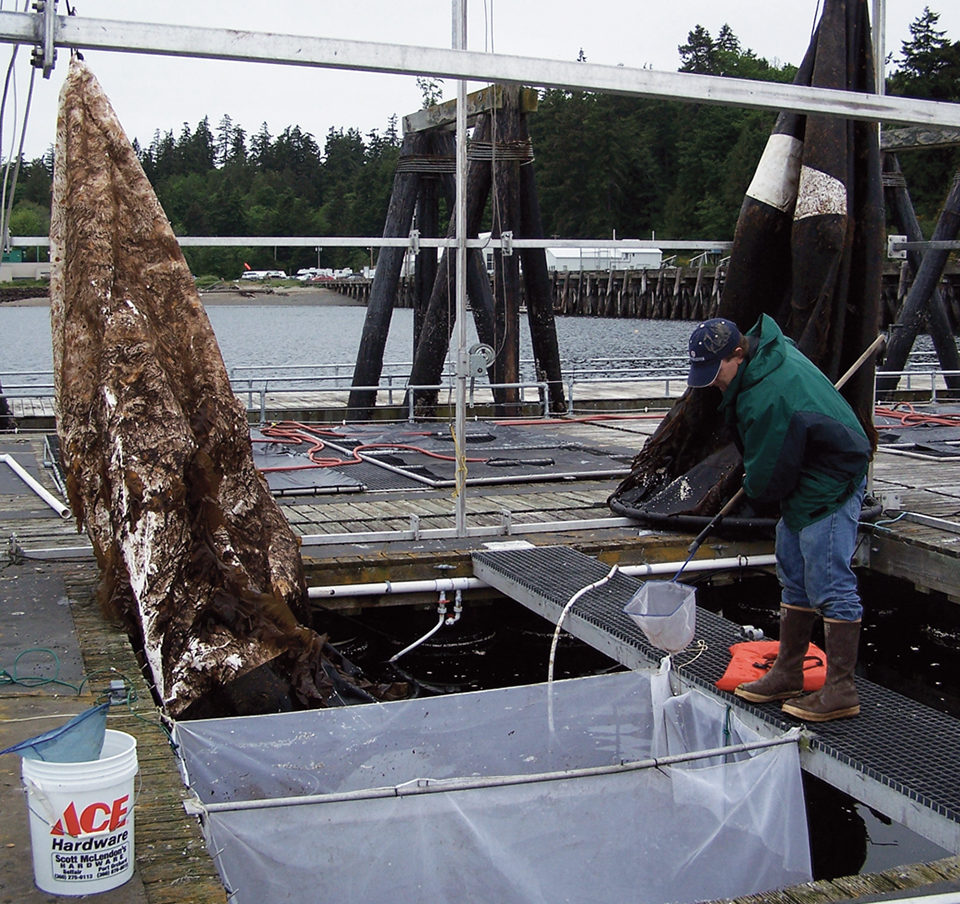
Further development
Some goals for the near future include early weaning studies to reduce reliance on artemia, which reached $500/kg for the premium cysts required. This year, fish responded well to a fish-based flake feed produced by the Northwest Fisheries Science Center in Seattle, Washington, USA, but rigorous feeding trials are needed to determine the optimal time and conditions for weaning. Questions regarding paternal contribution to each lingcod nest will also be investigated by taking genetic samples of eggs from different locations within a single egg mass.
(Editor’s Note: This article was originally published in the November/December 2008 print edition of the Global Aquaculture Advocate.)
Now that you've reached the end of the article ...
… please consider supporting GSA’s mission to advance responsible seafood practices through education, advocacy and third-party assurances. The Advocate aims to document the evolution of responsible seafood practices and share the expansive knowledge of our vast network of contributors.
By becoming a Global Seafood Alliance member, you’re ensuring that all of the pre-competitive work we do through member benefits, resources and events can continue. Individual membership costs just $50 a year.
Not a GSA member? Join us.
Authors
-
Matthew A. Cook
Manchester Research Station
7305 Beach Drive East
Port Orchard, Washington 98366 USA -
Kenneth Massee
Manchester Research Station
7305 Beach Drive East
Port Orchard, Washington 98366 USA -
Michael B. Rust, Ph.D
Manchester Research Station
7305 Beach Drive East
Port Orchard, Washington 98366 USA[118,111,103,46,97,97,111,110,64,116,115,117,114,46,101,107,105,109]
Tagged With
Related Posts

Health & Welfare
A study of Zoea-2 Syndrome in hatcheries in India, part 1
Indian shrimp hatcheries have experienced larval mortality in the zoea-2 stage, with molt deterioration and resulting in heavy mortality. Authors investigated the problem holistically.
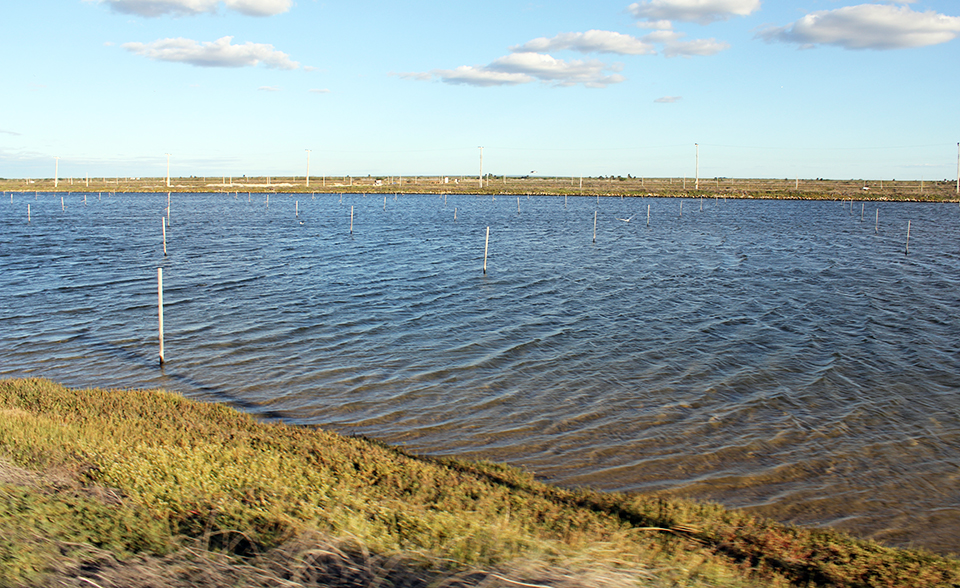
Health & Welfare
AHPN inferences based on behavior of vibrio bacteria
Vibrio parahaemolyticus, a strain of which is the cause of acute hepatopancreatic necrosis (AHPN), has both virulent and benign strains. This strain colonizes the stomachs of shrimp by the formation of a biofilm, which protects it from antibiotics and other potential treatments.
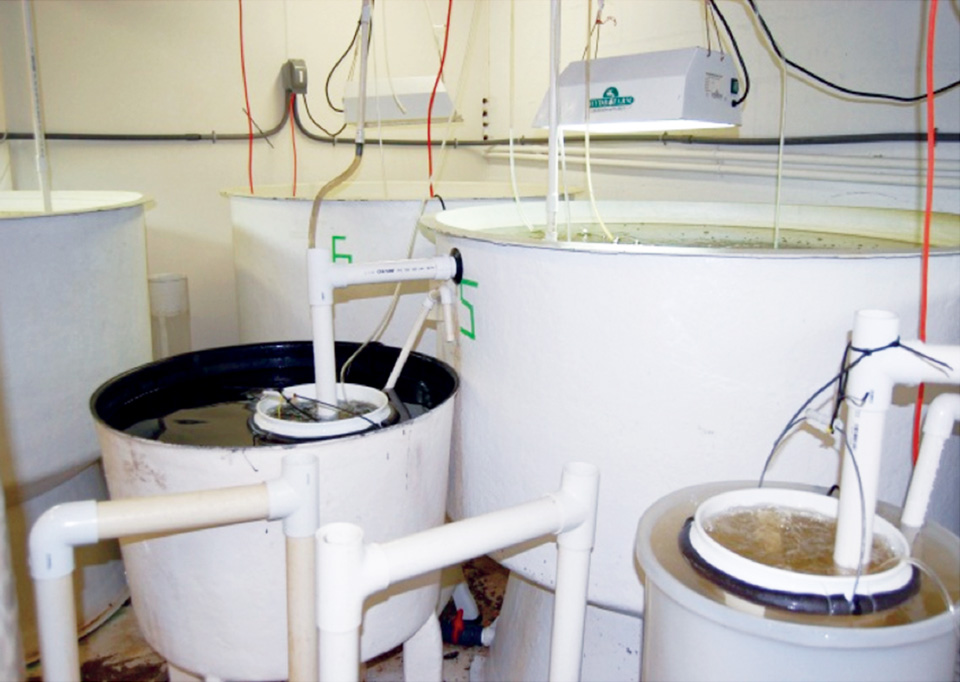
Health & Welfare
Advances in intensive copepod production technology
Research at the Oceanic Institute has been successful in overcoming bottlenecks associated with rearing small-mouthed fish larvae by finding a suitable first feed. Early work on the calanoid copepod Parvocalanus crassirostris focused on parameters necessary for successful maintenance of stock cultures.
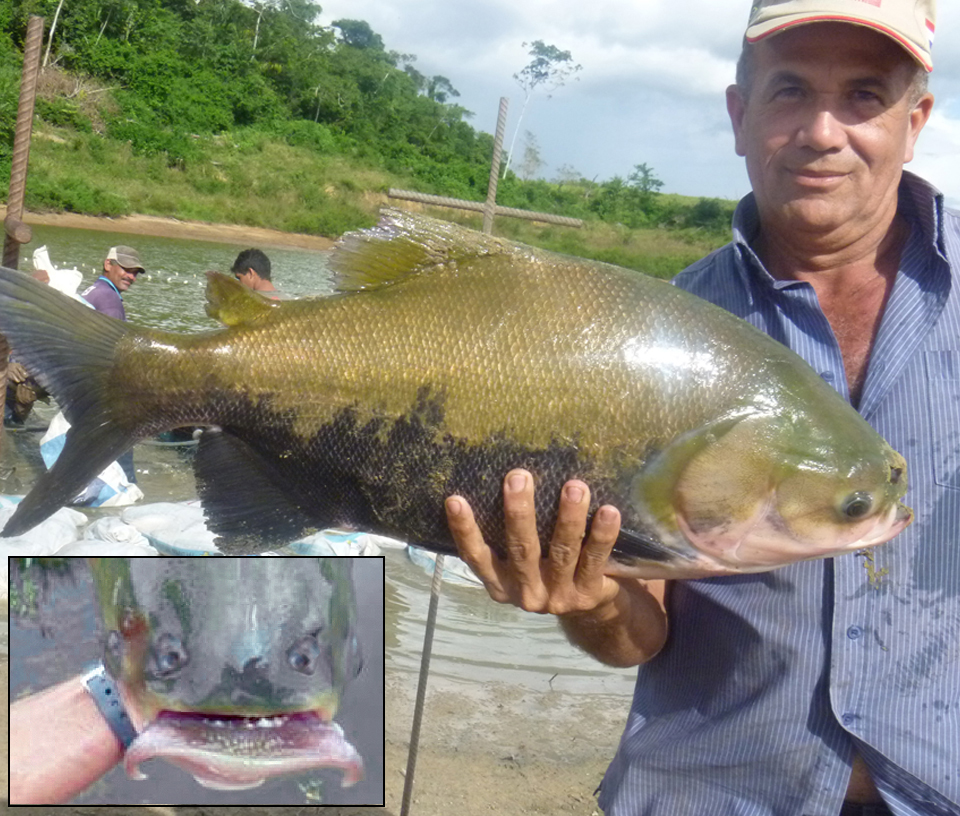
Health & Welfare
Aquaculture of Amazon fish in Latin America
Many fish species that live in the Amazon basin have great potential for aquaculture. The main species currently cultured in the region is tambaqui, a fast-growing, omnivorous fish that tolerates poor water quality.


